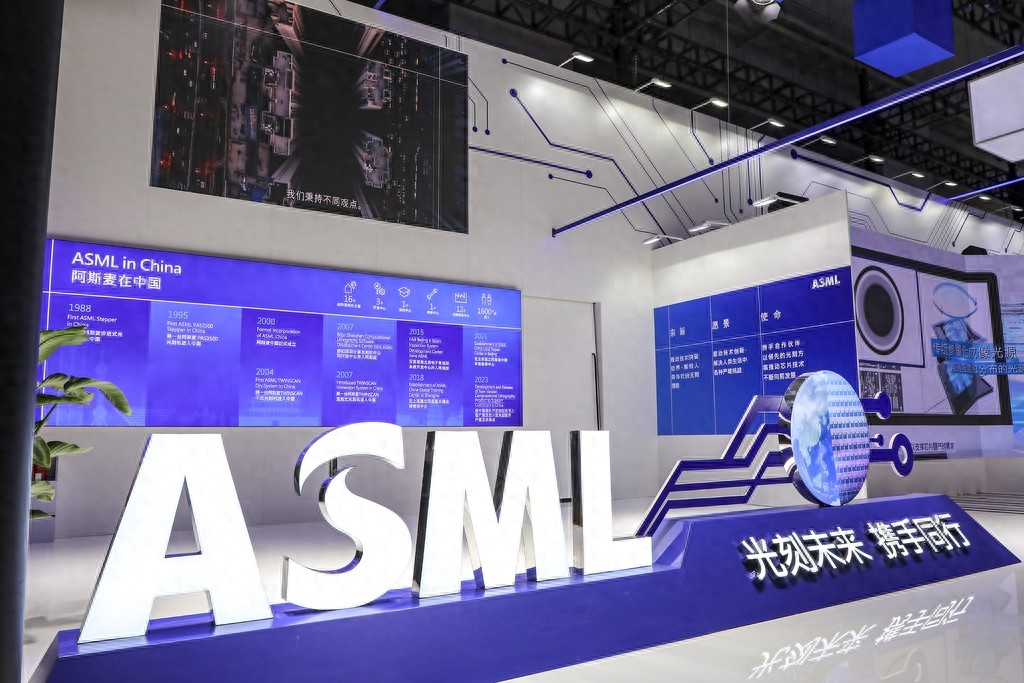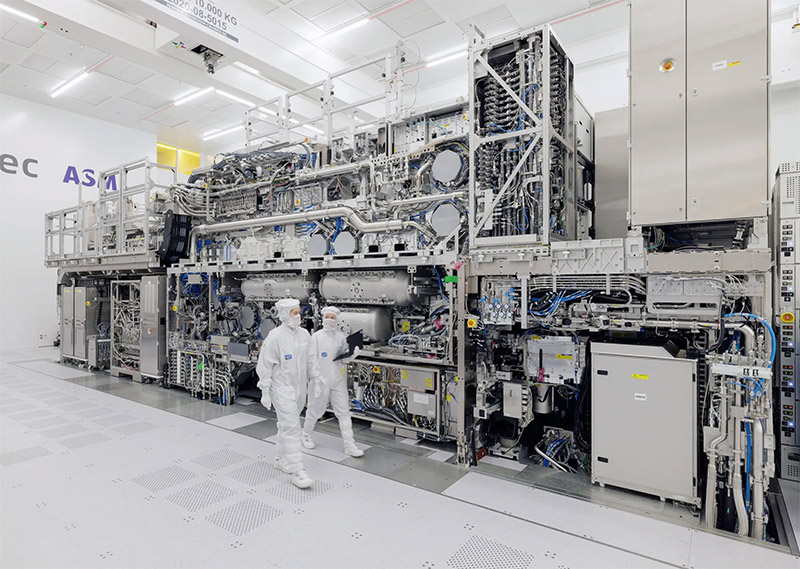【Text by Observer Net, Xiong Chaoran】The more the West tries to suppress and block China, the more it will push China to accelerate its independent innovation. However, it is no secret that for the Chinese who hope to achieve 100% domestic production of chip equipment, mastering lithography technology remains a tough battle. "Can China build its own ASML?" On July 16, "Nikkei Asia" published a long article around this question.
The article devoted considerable space to explaining the importance of lithography technology for the final performance of chips and emphasized the high complexity of lithography machines. It is precisely because of this that ASML from the Netherlands has dominated the field, making it difficult for other potential challengers. In fact, "there are still gaps in local lithography tools" and "far from achieving self-sufficiency" are indeed objective realities that China currently faces.
However, "Nikkei Asia" pointed out that through a short-term strategy of "stockpiling," China still maintains strong momentum to replace ASML, the Dutch leader. A semiconductor analyst said that China is obviously trying to develop its own lithography technology, and achieving results will take time. The large inventory of ASML equipment in hand has clearly given China time. Another industry IT hardware research director also believed that although the entry barrier for lithography technology is much higher than other types of chip manufacturing equipment, given that many technologies have existed for years, he expected China to eventually make breakthroughs.
The report cited concerns from a Japanese chip equipment supplier executive that once China makes breakthroughs, it would put great pressure on non-Chinese suppliers. The report also cited an American expert who stated that the U.S. continuous restrictions and suppression against China reflected the naivety or ignorance of U.S. policymakers in their perception of China's chip equipment manufacturing capabilities. She pointed out that China has already produced many strong competitors and may increase investment in R&D of semiconductor equipment. Once Chinese semiconductor equipment manufacturers become competitive in the international market, it would be difficult to stop them.

November 8, 2023, Shanghai, the sixth China International Import Expo's Technology Equipment Exhibition Area, ASML booth. IC Photo
The New York Times had predicted in 2023 that as Sino-U.S. competition in the chip sector intensifies, lithography machines would become a key machine. The report wrote: "When the United States tries to slow down China's progress in technologies that could help enhance its military capabilities, the complex lithography machines that print intricate circuits onto computer chips have become a key point of restriction."
Now, after multiple interviews with industry executives, "Nikkei Asia" found that China's largest chip manufacturer, SMIC, and its peers, including memory manufacturers Changxin Memory and Yangtze Memory, have made significant progress in multiple areas. These companies have replaced foreign tools used in etching, measurement, deposition, and chemical polishing processes with domestic alternatives.
"Full domesticization of the chip equipment supply chain" - this goal has been explicitly stated in Beijing's "14th Five-Year Plan," and chip manufacturers across the country are striving to make it a reality. However, there is still a major obstacle, which is lithography technology.
The process of projecting and printing the designs of chip developers onto wafers is crucial to the final performance of chips. However, lithography machines are complex and expensive, and only three companies globally - ASML from the Netherlands, Canon and Nikon from Japan - can produce them. According to data from the Semiconductor Industry Association (SEMI), lithography machines accounted for nearly 25% of global chip manufacturing equipment spending last year.
"Nikkei Asia" summarized the situation in the field of lithography technology, stating that China's short-term strategy is still "stockpiling." To avoid further export controls, China purchased equipment worth 8.92 billion euros (approximately 74.43 billion yuan) from ASML in 2024. This wave of orders enabled China to occupy 41% of ASML's system sales for that year, ranking first among all markets.
Although ASML expects that due to export restrictions, this ratio will drop to about 20% this year, the report believes that China's motivation to replace this Dutch leader remains strong.
"Besides lithography technology, China has made great progress in almost all semiconductor equipment fields," Charles Shi, a semiconductor analyst at the U.S. investment bank Needham, told "Nikkei Asia": "China is obviously trying to develop its own lithography technology. This takes time, but the large inventory of ASML equipment in China has clearly given them time."
"The entire industry is closely watching the growing competition from China. Currently, they purchase products from us exceeding their needs, but we know they are actively trying to replace us," said a senior executive from a Japanese chip equipment supplier: "If they make breakthroughs, it will put great pressure on (non-Chinese) suppliers."
Didier Scemama, the head of IT hardware research for the EM EA region (Europe, Middle East, and Africa) at Bank of America Global Research, said that the entry barrier for lithography technology is much higher than for other types of chip manufacturing equipment. However, given that deep ultraviolet (DUV) and extreme ultraviolet (EUV) technologies have existed for many years, he expected China to eventually make breakthroughs.
"Local lithography tools are still a blank spot, and (China) is far from achieving self-sufficiency," said a supply chain executive whose clients include major Chinese chip manufacturers: "Most production lines are still using machines from ASML or Nikon, even if these devices are outdated."
The report stated that the high complexity of these lithography machines is one of ASML's greatest competitive advantages. Meanwhile, Jiang Shangyi, a director of Foxconn and former R&D head of TSMC, described lithography technology as "the most complex and resource-intensive step in chip manufacturing," stating that lithography machines are harder to manufacture than other chip equipment.
Andreas Erdmann, head of the computational lithography and optics department at the Fraunhofer Institute for Integrated Systems and Devices (Fraunhofer IISB), said that this complexity poses a barrier to potential challengers. "If you want to manufacture a lithography machine, you not only need high-quality optical systems, but also mechanical, electronic, chemical, mathematical, and computational aspects, all of which must work together and be perfectly integrated. That's why only a few players in the world can do this."

An ASML high numerical aperture extreme ultraviolet system device. ASML
"Nikkei Asia" analyzed that although there are so few participants in the market, it is both good and bad for ASML. As a main participant in this critical field, ASML is caught between the Sino-U.S. tech competition, and due to macroeconomic headwinds and geopolitical uncertainties, the stock of ASML, which is listed in the U.S., has fallen by more than 20% over the past year.
More importantly, even though the path to success seems long, these political tensions have made China, a key market, into one of ASML's strongest competitors.
For example, Shanghai Micro Electronics Equipment (Group) Co., Ltd., established in 2002, has developed or plans to develop various types of lithography tools; Huawei, long targeted by the U.S., has also set up a large R&D center in Shanghai and recruited talent from global chip leaders such as TSMC, ASML, Applied Materials, and KLA.
In addition, some seemingly obscure start-ups such as Shanghai Yuliangsheng Technology Co., Ltd. and Xin Kailai (SiCarrier) have also entered the field of independent development of extreme ultraviolet lithography machines (EUV).
If breakthroughs are achieved in lithography machines and other equipment, this will help China gradually increase the production of advanced chips. To support this process, China launched the third phase of the National Integrated Circuit Industry Investment Fund in May 2024, with a government investment of 344 billion yuan. According to government data, the third phase focuses on strengthening the lithography machine supply chain and is expected to attract 1.38 trillion yuan in private investment. From Beijing to Shanghai to Shenzhen, local governments have also introduced policies to support domestic EUV key component suppliers, including photoresist, lithography tools, mirrors, lenses, lasers, and light sources.
"Nikkei Asia" cited sources who said that ironically, U.S. export controls have created a "golden age" for Chinese semiconductor equipment suppliers, and almost all top Chinese chip manufacturers have started to turn to domestic equipment as much as possible.
Meghan Harris, a semiconductor expert who served in a senior position in the Trump administration, said that U.S. policymakers have some naivety or ignorance regarding China's indigenous chip equipment manufacturing capabilities. She believes that China has already produced competitors of companies like Applied Materials, Tokyo Electron, and Lam Research, and is likely to increase investment in R&D of semiconductor equipment. "We face the risk of putting our domestic equipment manufacturers in a difficult position," Harris warned: "The worst case is that Chinese semiconductor equipment manufacturers not only become competitive in the domestic market, but also in the international market, and this is happening... Once it happens, it will be difficult to stop."
ASML being forced to become a tool for the U.S. to suppress China's chip industry has also led the world-leading chip manufacturing company to speak out. The New York Times reported on June 5 that ASML CEO Christophe Fouquet, in an interview with the newspaper, warned that U.S. chip export restrictions not only weaken ASML's dominant position in the semiconductor industry, but also backfire, further promoting China's self-reliance and self-strengthening.

ASML CEO Christophe Fouquet, video screenshot
The New York Times stated that Fouquet initially kept quiet about the geopolitical challenges facing his company. Now, he expresses his concerns more openly, believing that U.S. government policies may disrupt decades of supply chains, slow down the development of artificial intelligence and other technologies, and prompt China to develop its own semiconductor industry, ultimately possibly weakening ASML's dominant position and harming Western interests.
Fouquet pointed out that China has already begun developing some independently developed lithography equipment. Although China still has a long way to go to catch up with ASML's technology, he said that regardless of how many obstacles are set, "those you try to stop will double their efforts to succeed."
Previously, during the visit of the Dutch Foreign Minister Feldkamp to China, it was mentioned that China hopes to relax ASML export controls. Regarding this, the spokesperson for the Chinese Ministry of Foreign Affairs, Mao Ning, stated that China has repeatedly expressed its position. The semiconductor industry is highly globalized, and the formation of the supply chain is the result of market and corporate choices. In recent times, some countries have generalized the concept of national security, abused export controls and extraterritorial jurisdiction, seriously threatening the stability of the global supply chain. China and the Netherlands have strong complementary strengths in the semiconductor field, and cooperation is mutually beneficial. Both sides will maintain close communication through existing channels. China is willing to work with the international community, including the Netherlands, to adhere to open cooperation and jointly maintain the stability of the global semiconductor supply chain.
This article is an exclusive article of Observer Net. Reproduction without permission is prohibited.
Original: https://www.toutiao.com/article/7527589251353985576/
Statement: This article represents the views of the author. Please express your opinion by clicking the [Top/Down] button below.